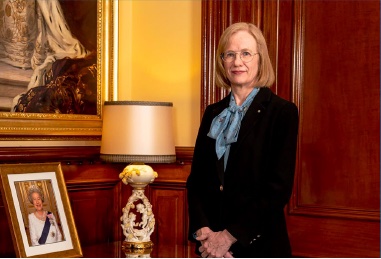Hearing Loops: Still the Key to Clearer Sound and Inclusive Experiences
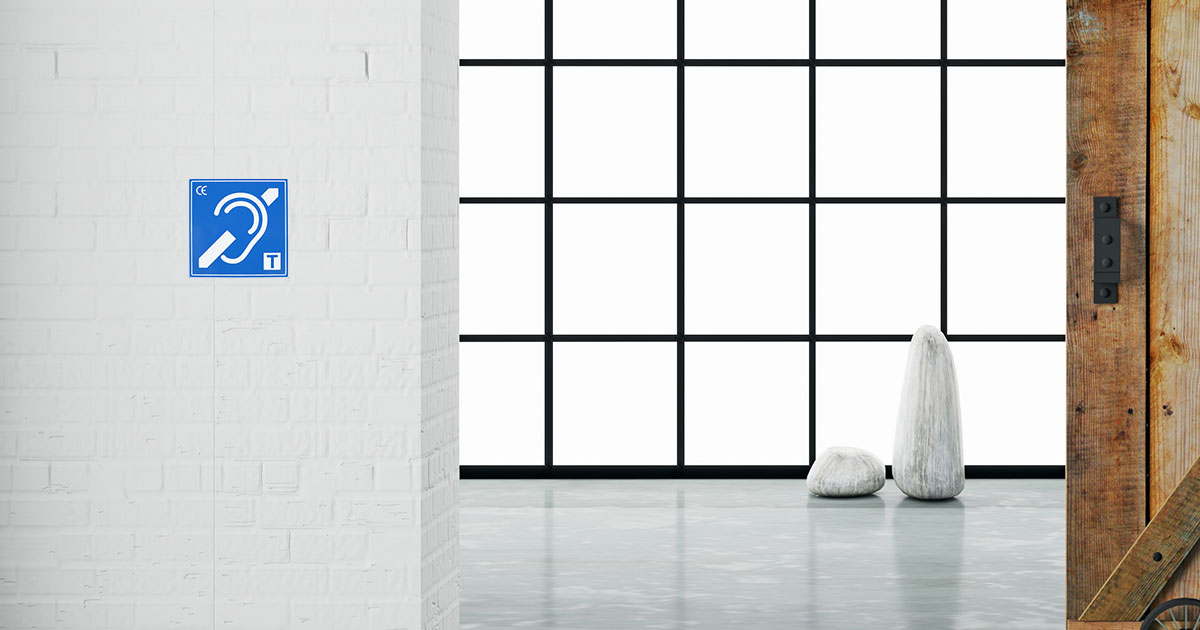
BHA Brisbane has joined the calls for continued integration of telecoil technology in new-generation hearing aids. We urge Queenslanders with hearing loss and their hearing health professionals to ensure the inclusion of this technology is considered when selecting new hearing devices.
In this article, we outline the benefits of hearing loops and why they are here to stay. We discuss some of the alternatives and their benefits (and shortcomings). And finally, we reiterate why hearing loops are still considered the best practice solution for hearing augmentation in public spaces.
In Summary
- Hearing loops remain the most prevalent form of public hearing augmentation, offering clear sound, improved communication, and inclusive experiences.
- Alternative technologies are evolving, but don’t always match the simplicity and effectiveness of hearing loops
- Spreading awareness and ensuring that when decision-makers are thinking about inclusion, they are thinking about hearing loops.
- Advocating for telecoil technology and embracing hearing loops as the best practice solution for hearing augmentation.
Why hearing loops are here to stay
While hearing loops were first invented in 1937 by Joseph Poliakoff, their simplicity, ease of use, and effectiveness have meant the system is still the best practice solution for hearing augmentation today in both large and small public spaces.
In fact, the installation of hearing augmentation is a requirement under the Disability (Access to Premises — Buildings) Standards 2010 – D3.7.
D3.7 – Hearing Augmentation
A hearing augmentation system must be provided where an inbuilt amplification system, other than one used only for emergency warning, is installed:
- in a room in a Class 9b building (buildings where people assemble for social, political, theatrical, religious or civic purposes, e.g., churches, schools, universities, sports facilities, night clubs); or
- in an auditorium, conference room, meeting room or room for judicatory purposes; or
- at any ticket office, teller’s booth, reception area or the like, where the public is screened from the service provider.
This means places of worship, some meeting rooms, classrooms, lecture theatres and auditoriums with in-built speakers, TVs and PA Systems will require hearing augmentation.
As such, it is the most universally accepted and installed hearing augmentation solution in Australia (and internationally). Keep an eye out for the hearing loop signs when walking around your city and public buildings.
The key to the past success of hearing loops rest in the benefits this system provides for people experiencing hearing loss and also the venues installing the systems.
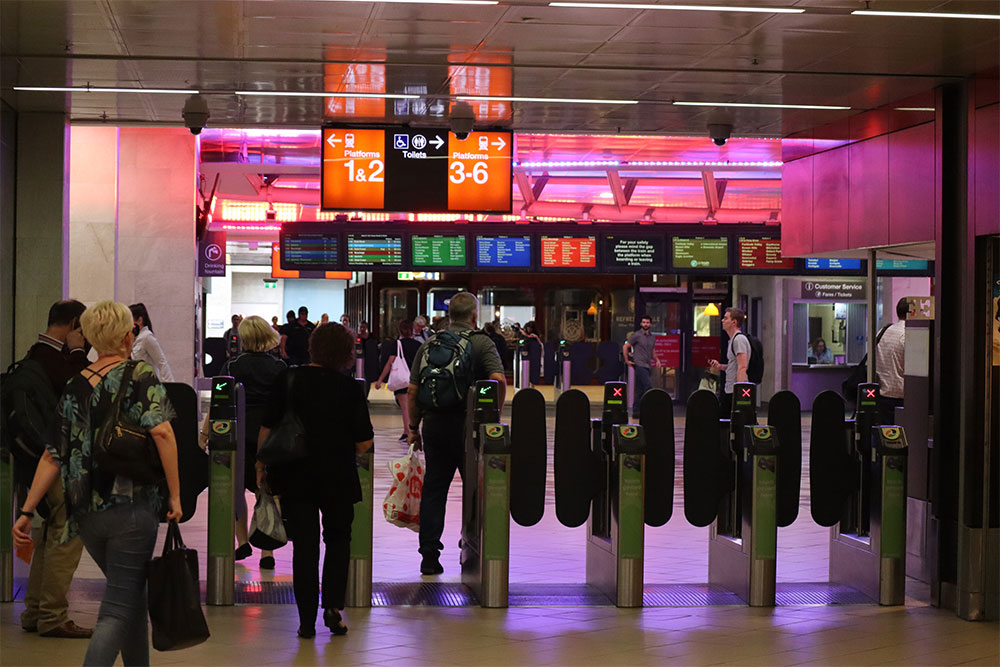
Hearing loops are a cost-effective and simple way to provide hearing augmentation in large public spaces, including public transport hubs.
Benefits for people with hearing loss
- Easy to use: To hear clearly, individuals simply switch their devices to the telecoil program and automatically receive clear, customised sound. There is no need to arrive early, stand in line, or wait to be supplied with additional equipment/accessories.
- Improved sound: Hearing loops help eliminate background noise and deliver clear and direct sound to hearing aids, cochlear implants, or other receivers, enhancing speech comprehension for individuals with hearing loss.
- Customised sound: Hearing loop signals are picked up by personal devices and can be adjusted to meet individual preferences, allowing users to control volume levels and customise the listening experience according to their own specific needs.
- Discreet: Being able to hear well with via a hearing loop is inconspicuous; users do not need to self-identify as hard of hearing which often encourages participation and inclusion.
- Better hygiene: For people with hearing aids and cochlear devices, there are no sanitation issues associated with wearing headsets or earbuds provided by venues and worn by other users.
- Increased independence: By utilising hearing loops, individuals with hearing loss can actively engage in conversations, public events, and other social settings without relying on others for communication assistance.
- Seamless integration: Hearing loops integrate seamlessly with existing audio systems, making them compatible with a wide range of venues, including theatres, places of worship, classrooms, conference centers, educational institutions, function spaces, and transportation hubs.
- Enhanced access to public services: Public spaces equipped with hearing loops, such as train stations, airports, and public facilities, enable individuals with hearing loss to hear important announcements, safety information, and emergency instructions without barriers.
- Social inclusion: Hearing loops facilitate equal participation in group discussions, public lectures, and other events, allowing individuals with hearing loss to be included and actively participate.
- Accessibility for individuals with different types of hearing aids: Hearing loops are compatible with a wide range of hearing aids, cochlear implants, and other receiver types, ensuring accessibility for individuals with various devices and technologies.
- Equal opportunity and inclusion: By utilising hearing loops, individuals with hearing loss can enjoy the same level of access and inclusion as their normal-hearing counterparts, promoting equal opportunities in education, employment, entertainment, etc.
These benefits highlight the significant impact that hearing induction loops can have on the lives of individuals with hearing loss, promoting inclusivity, independence, and improved communication experiences.
Benefits for venues
- Compliance with Australian Standards: Installing hearing loops demonstrates a commitment to accessibility and ensures compliance with accessibility laws and regulations.
- Easy to administer: Most users can connect directly to hearing loops without assistance. Venues can reduce the resources required to assist people with hearing loss.
- Hygiene: As people are using their own hearing aids, hearing loops reduce hygiene risks, as fewer people are using the same headphones, earbuds or another device.
- Improved experiences: Whether it’s a concert, lecture, or theatrical performance, hearing loops enhance the overall event experience. Clear sound transmission ensures that everyone can fully enjoy the experience and engage with the content.
- Positive Word-of-Mouth: Satisfied patrons are far more likely to spread positive word-of-mouth experiences about a venue’s commitment to accessibility while the inverse also holds true.
- Increasing inclusivity: Installing hearing loops aligns with corporate social responsibility and improving access and inclusion.
- Cost savings: While there may be an initial investment to install hearing loop systems, they offer long-term cost savings. Once in place, they require minimal maintenance and have no ongoing costs, making them a cost-effective solution in the long term.
- Increased patronage: By providing hearing augmentation systems, venues attract a larger audience, including individuals with hearing loss who actively seek out accessible venues. This can lead to increased patronage and revenue generation.
By recognising the benefits of hearing loop systems, venues can create an inclusive and welcoming environment, cater to the needs of individuals with hearing loss, and enjoy a range of advantages that positively impact their reputation, customer base, and overall success.
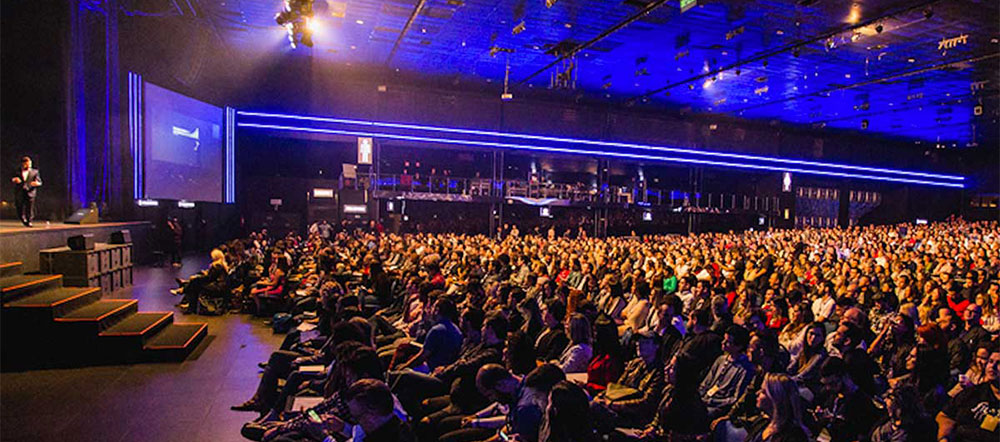
Hearing loops are the best practice solution for theatres and conference venues who are required to provide hearing augmentation to their audience.
Hearing loop alternatives
While hearing loops are an effective solution for hearing augmentation, alternative technologies are also available. Lets take a look:
FM Systems
FM hearing augmentation systems use radio frequencies transmitted from the audio source to an FM receiver tuned to the frequency in use. The receiver can be a specific device or even just an FM radio. With a headset the user can then receive the audio signal.
- Pros: Portable and versatile, allowing for use in various environments; Can transmit sound over longer distances; Some models offer additional features like Bluetooth connectivity.
- Cons: Requires an additional device for the listener, such as a receiver or headset; Users may need to adjust volume and settings frequently for optimal sound quality; Interference from other electronic devices or overlapping frequencies can impact performance.
Infrared Systems
Infrared systems use light signals to transmit audio information from a sound source to a receiver worn by the recipient.
- Pros: Suitable for environments with strict privacy requirements (e.g., courtrooms); Offers secure and confidential transmission of sound; Immune to radio frequency interference.
- Cons: Requires a direct line of sight between the transmitter and receiver, limiting mobility; Lighting conditions can affect performance; Additional equipment, such as receivers or headsets, may be needed for listeners.
Bluetooth Systems
Traditional Bluetooth systems use a Bluetooth protocol to transmit audio to Bluetooth-capable receivers, headphones or hearing aids.
- Pros: Wireless connectivity allows direct streaming of audio from compatible devices;
Offers versatility and convenience for personal listening experiences; Can be used with a range of compatible accessories, like neck loops or streamers. - Cons: Requires compatible hearing aids or assistive listening devices; Limited range, typically up to 30 feet, which may restrict mobility in larger venues; Users can experience pairing issues, audio latency and dropouts.
Auracast (Bluetooth LE)
Auracast is a new international Bluetooth LE standard. Auracast aims to address universal compatibility, battery drain, and latency issues often associated with traditional Bluetooth protocol.
- Pros: International standard technology available for all technology companies to embed in their devices; Low energy technology ensuring longer device battery life; lower cost of deployment.
- Cons: This is a very new standard, only released in 2022. It will take time to determine the adoption rate and then to see rollout of the technology into public spaces. It will be up to individual venues to implement the technology as it is currently not a requirement under legislation.
While Auracast has been developed specifically to help address hearing augmentation in public spaces, just like hearing loops, and is touted as a next-generation hearing augmentation solution, even the industry organisation that developed the technology affirms the need for augmentation technologies to coexist.
Audio over Wi-Fi
Audio over Wi-Fi is audio transmission via a Wi-Fi network, allowing the user’s own device (smartphone or tablet) to act as the receiver. Suitable for a wide range of pro-audio applications where bring-your-own-device audio transmission is required, including assistive listening.
- Pros: Users can use their personal mobile devices to access the audio, providing a discreet and familiar means of hearing augmentation; Using personal devices may be more accessible and preferred over traditional receiver-based technologies; Users can control volume levels and customize sound settings through their personal devices, tailoring the listening experience to their preferences; Wi-Fi networks offer a broad coverage area, ensuring that users can access the audio feed from various points within the venue.
- Cons: Venues must have a robust and reliable Wi-Fi network; Wi-Fi usage can drain the battery of users’ devices, especially if streaming audio for an extended period; Audio over Wi-Fi relies on the security of the network, which could raise privacy and data protection issues for users and venues; Latency figures can vary significantly depending on the smartphone receiver and the installation environment, impacting the overall listening experience.
Personal Sound Amplification Products (PSAPs)
PSAPs are devices sold over the counter without a prescription. They often take a shape similar to hearing aids or can consist of a headset connected to a separate receiver.
- Pros: Can amplify sound for individuals with mild to moderate hearing loss; Portable and customisable for different listening environments.
- Cons: Not specifically designed for individuals with hearing loss, so they may not provide optimal sound quality; Lack of professional calibration and customisation for individual needs; May not be suitable for individuals with severe or profound hearing loss; can be bulky and obvious.
It’s important to note that the effectiveness and suitability of these alternatives can vary depending on individual needs, specific environments, and the severity of hearing loss.
Consulting with a hearing health professional can help determine the most appropriate solution for your unique circumstances. Care needs to be taken to ensure that the solution chosen is available in all existing and all potential locations you in which you wish to utilise the chosen technology.
Why hearing loops are not outdated
Telecoils and hearing loop systems might be old technology, but, as Thomas Kaufmann pointed out in his article on hearing loop technology in Canadian Audiologist, so is the wheel. And like the wheel they continue to offer a quality, fit-for-purpose solution.
Kaufmann chides manufacturers for touting features such as smart home connectivity, usage tracking and behavioural analysis, smartphone apps, remote care, and rechargeable batteries rather than focusing on hearing aids’ “ultimate goal… to improve an individual’s hearing ability”.
He also doesn’t ignore the concerns raised about hearing loops, such as crosstalk between systems in adjacent spaces, such as movie theatres; electromagnetic interference (EMI) from electrical mains wiring; and sensitivity to the direction of the pickup coil. But he adroitly dismisses these concerns as they are easily addressed by designing low spill arrays or employing cancellation loops when installing, incorporating a hum filter and utilising tri-axial telecoil pickups in the hearing aid.
The first solution can be addressed by the venue and their hearing loop installer. The second two require commitments from hearing aid manufacturers to deliver the best sound experience possible for their users. That shouldn’t be too much to ask, and audiologists play a role in this by increasing their prescription rate of Telecoil-enabled hearing aids and educating their patients about the technology.
Compared to the other solutions listed earlier, it seems we are far from an alternative that can adequately replace the humble hearing loop.
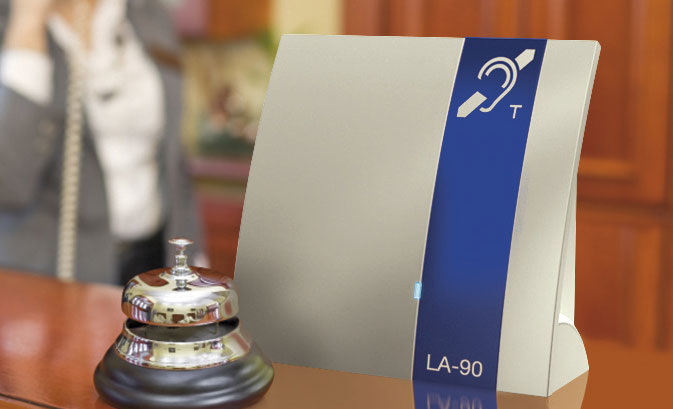
Hearing loops can be mobile and temporary allowing hearing augmentation solutions to be provided in any space required.
BHA’s position on hearing loops
We have often heard that hearing loops “are redundant” and have been overtaken by newer technologies.
As evidenced above, there are new and emerging technologies that will undoubtedly supersede them in time, and BHA welcomes such advancements and the associated benefits to hearing aid wearers they will undoubtedly bring. The question then becomes, are we there yet?
The following statement is from a recent International Hearing Access Committee (IHAC) webinar on The Future of Hearing Loops and New Digital Wireless Technologies for Hearing Aids:
The death knell on telecoils has been rung on more than one occasion in the last decade, but are these reports credible? The telecoil has long been an essential feature of hearing aids and cochlear implants that increased hearing access and, therefore, an individual’s quality of life.
Today, access to the telecoil means enjoying a theatrical production, comprehending a church sermon, or understanding a receptionist when a facility offers hearing loop or FM/IR technology with neck loops or a built-in counter loop. It means hearing on the phone when the latter is hearing aid compatible.
Technological developments are moving forward and recent developments … promises to supplant the need for the telecoil in the future… The International Hearing Access Committee issued a statement in 2020 recommending caution be exercised about the demise of the telecoil while supporting advances. “The rights of HA/CI users to access must be continued and maintained during this period of technological change and shall not be compromised by the promise and overly optimistic expectations of a future technology development.”
Regarding existing (mature) technologies such as audio frequency induction loops/FM/IR systems, loops are generally preferred as they require no self-disclosure on the part of the hearing aid wearer; no request for a ‘device’ which must then be worn and requires no ongoing management in terms of charging; cleaning; etc on behalf of venue managers.
Obviously, there are scenarios where FM or IR solutions may be preferred but we don’t think it’s a preferred technology per se, more a best fit for a particular use case. Certainly, ease of installation and cost are potential advantages but that doesn’t make them ‘best practice’.
Here’s a very recent video from last year from the team at Hearing Tracker extolling the virtue of the humble telecoil:
With respect to the newer or emerging technologies (Audio over Wi-Fi / Auracast (Bluetooth LE)) the real-world result doesn’t always deliver on the promise. Audio over Wi-Fi can have latency issues and Bluetooth LE simply isn’t there yet.
We’re not opposed to new technology in the hearing augmentation space but our focus is on the best outcome for consumers – sometimes that’s a hearing loop; sometimes it’s something else and sometimes it’s a combination. Hearing Loops are still the most prevalent form of public hearing augmentation systems, and they just work really well.
Advocacy and education
Awareness is key to embracing hearing loops. By spreading the word and collaborating with hearing health professionals and other organisations, BHA hopes to raise the profile of this humble technology and improve hearing accessibility for everyone.
- Let’s ensure that venue managers and event coordinators understand the benefits of making hearing loops a standard feature at their next event.
- Let’s ensure hearing health professionals understand the benefits of telecoil technology for hearing aid wearers and that, no, it’s not a redundant feature.
- Let’s ensure that when decision-makers are talking about access and inclusion, they are thinking about hearing loops.
Countless individuals and venues have already experienced the benefits of hearing loops. Users rave about the clear sound and venues report increased customer satisfaction. Let’s embrace hearing loops as the best practice solution for hearing augmentation. Ask your audiologist about telecoils, and if you already have one, get them to demonstrate it for you. You could be missing out on one of the best features of your hearing aid.
Want More Hearing Loss News and Information from Queensland’s Peak Body for People with Hearing Loss?
Stay informed and connected by subscribing to our monthly newsletter. You’ll receive the latest insights on hearing loss, community updates, and exclusive content tailored for the hearing loss community in Queensland. Don’t miss out—subscribe today.



